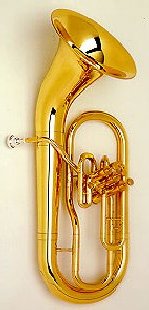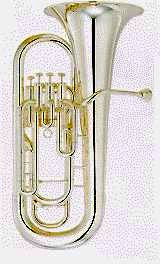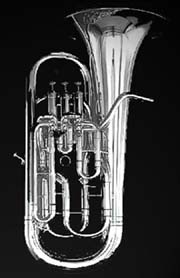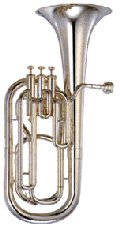
[ Main | What is a euphonium? | MIDI Files | Sign Guestbook | See Guestbook | Links ]
 [ Main | What is a euphonium? | MIDI Files | Sign Guestbook | See Guestbook | Links ] |
 |
The 'bell-front' euphonium is so named because the bell faces forward when the instrument is held. The limitation of only three valves makes this variety a poor choice unless weight or low cost are serious factors. (i.e., marching) |
 |
The type seen most often is the 'bell-up' variety (mostly peddled by Yamaha). These often feature a fourth valve, which increases the range - thereby increasing the flexibility of the instrument. The fourth valve (it's the one far left on the screen) lowers the fundamental pitch of the instrument by a fifth (Bb to F). |
 |
The 'compensating' euphonium is a more advanced type of bell-up euphonium. The fourth valve (mounted on the side of the instrument) provides a 'fix' for low range tuning problems. (Click here for a detailed explaination). |
 |
As you can see, the proportions of the baritone are quite different from the euphonium. This difference in the tubing changes the sound dramatically. While the euphonium has a very mellow sound, the baritone has a tone resembling a trombone. So how could anybody confuse those two instruments, you ask? The answer is simple: most people (band directors included) have never seen a true baritone! It's such a rare instrument in the U.S., in fact, that its name slowly became imposed on its more common cousin, the euphonium! "And now", as Paul Harvey so frequently says, "you know the rest of the story." |